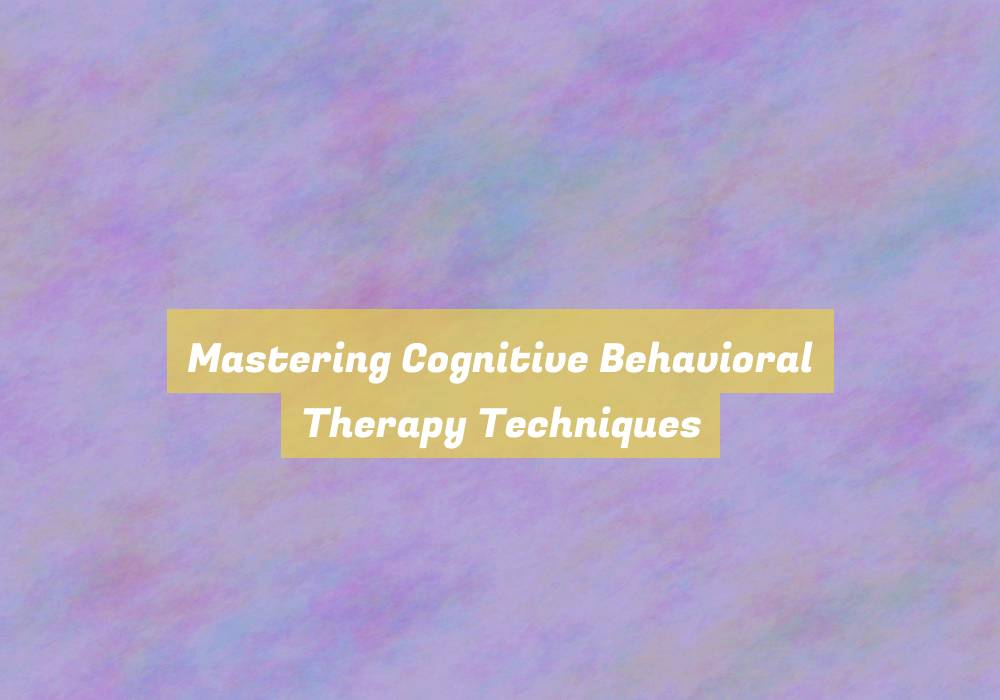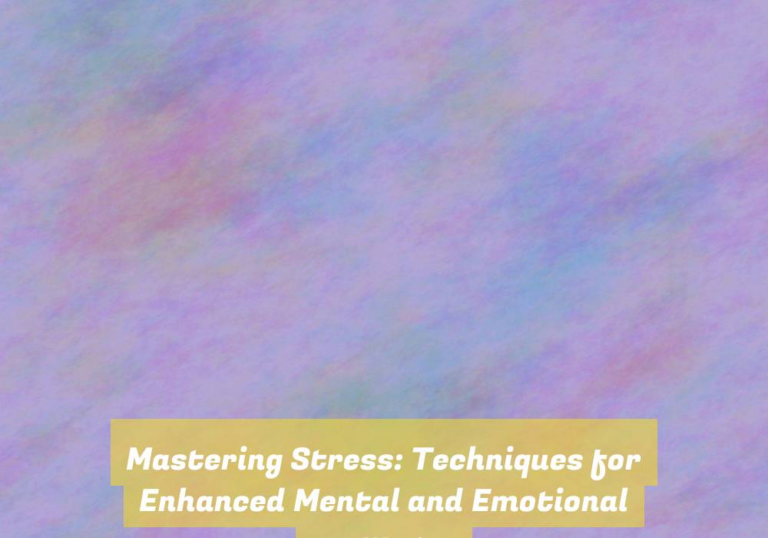Mastering Cognitive Behavioral Therapy Techniques
So, youG??ve dipped your toes into the world of cognitive behavioral therapy (CBT) and youG??re starting to see its potential.
But now, itG??s time to take it to the next level. Mastering CBT techniques is a journey that requires dedication and a deep understanding of human behavior.
As you navigate through the complexities of CBT, youG??ll find that there are key techniques and strategies that can elevate your practice to new heights.
But where do you begin, and how can you refine your skills to truly master the art of CBT?
Understanding the Basics of CBT
To understand the basics of Cognitive Behavioral Therapy (CBT), itG??s important to recognize its focus on changing patterns of thinking and behavior to improve emotional well-being. CBT operates on the principle that our thoughts and actions significantly impact our emotions. By identifying and altering negative thought patterns and behaviors, CBT aims to alleviate emotional distress and promote healthier mental states.
In CBT, the therapist and individual work collaboratively to pinpoint the negative thought patterns and behaviors that contribute to emotional difficulties. This process involves examining the connections between thoughts, feelings, and actions. Through this examination, individuals develop a deeper understanding of how their thoughts influence their emotions and behaviors.
Once these negative patterns are identified, the focus shifts to modifying them. This can involve challenging irrational or unhelpful thoughts and replacing them with more constructive and rational ones. Additionally, individuals learn and practice new coping skills and behaviors to manage challenging situations. The ultimate goal is to cultivate a more balanced and adaptive way of thinking and behaving, which in turn enhances emotional well-being.
Applying CBT Techniques in Practice
You can effectively apply CBT techniques in practice by utilizing specific strategies tailored to individual needs and circumstances. One way to do this is by conducting a thorough assessment of the clientG??s thought patterns, emotions, and behaviors. By gaining a comprehensive understanding of the clientG??s unique challenges, you can then tailor CBT interventions to address their specific issues.
For example, if a client struggles with anxiety, you can employ techniques such as cognitive restructuring to help them challenge and reframe their anxious thoughts. Additionally, you can teach clients relaxation and mindfulness techniques to manage their physical and emotional responses to anxiety-provoking situations.
Another crucial aspect of applying CBT techniques in practice is fostering a collaborative and goal-oriented therapeutic relationship. By working together with your clients to set specific, achievable goals, you can ensure that the CBT techniques are effectively applied and progress is monitored. This collaborative approach empowers clients to take an active role in their treatment and enhances their motivation to engage in the therapeutic process.
Furthermore, itG??s essential to regularly assess the effectiveness of the CBT techniques being used and make adjustments as needed. By monitoring the clientG??s progress and continuously adapting the treatment plan, you can maximize the effectiveness of CBT interventions and help clients achieve meaningful and sustainable change.
Overcoming Common Challenges in CBT
Despite the effectiveness of cognitive behavioral therapy (CBT) techniques, practitioners often encounter common challenges when implementing this approach in clinical practice.
One of the main hurdles is resistance from clients. ItG??s not uncommon for clients to be skeptical about the effectiveness of CBT or to resist engaging in the challenging work it requires. To overcome this, itG??s essential to educate clients about the evidence-based nature of CBT and to emphasize the collaborative nature of the therapy process.
Another challenge is the time and effort required for CBT. Both clients and therapists may find it demanding to consistently apply CBT techniques. Encouraging clients to practice skills between sessions and providing them with resources to support their learning can help address this challenge. Additionally, managing crises and high-risk situations can be difficult within the structured framework of CBT. ItG??s crucial for therapists to be flexible and adaptable in these situations while still maintaining the core principles of CBT.
Lastly, addressing comorbid conditions can pose a challenge. Clients with multiple diagnoses may require a more tailored approach, and therapists must be prepared to adapt CBT techniques to meet these complex needs.
Advancing Your CBT Skills
Enhancing your proficiency in CBT techniques can significantly impact your effectiveness as a therapist. As you advance your CBT skills, consider seeking out specialized training programs or workshops to deepen your understanding. Engaging in regular supervision or consultation with experienced CBT practitioners can provide valuable insights and guidance. Additionally, staying updated with the latest research and developments in the field of CBT can help you refine your skills and stay current with evidence-based practices.
Another way to advance your CBT skills is by actively seeking feedback from your clients. Creating a collaborative and open environment in which clients feel comfortable providing feedback can offer you valuable perspectives on your therapeutic approach. Embracing feedback as a learning opportunity can help you adapt and improve your CBT techniques.
Furthermore, consider exploring advanced CBT techniques such as mindfulness-based interventions, acceptance and commitment therapy (ACT), or dialectical behavior therapy (DBT). These approaches can complement traditional CBT methods and expand your repertoire of therapeutic tools.
Conclusion
Congratulations on mastering cognitive behavioral therapy techniques! By understanding the basics, applying techniques in practice, and overcoming common challenges, you have advanced your CBT skills.
Keep practicing and refining your skills to help clients effectively manage their thoughts and behaviors. Your dedication to learning and growing in this field will make a positive impact on the lives of those you work with.
Keep up the great work!





